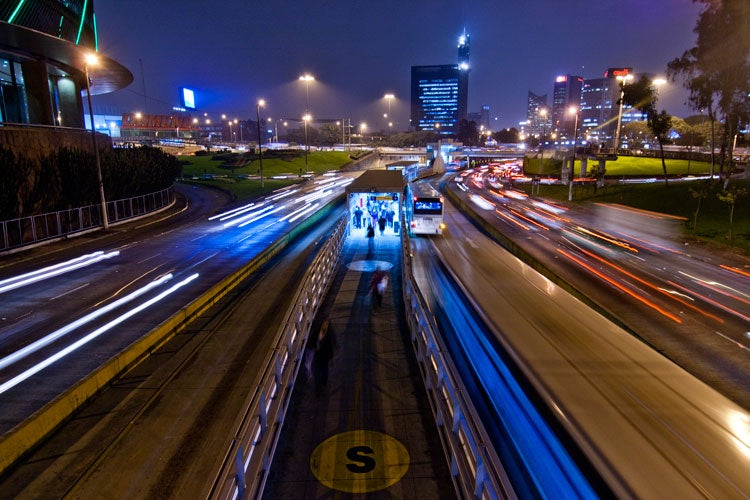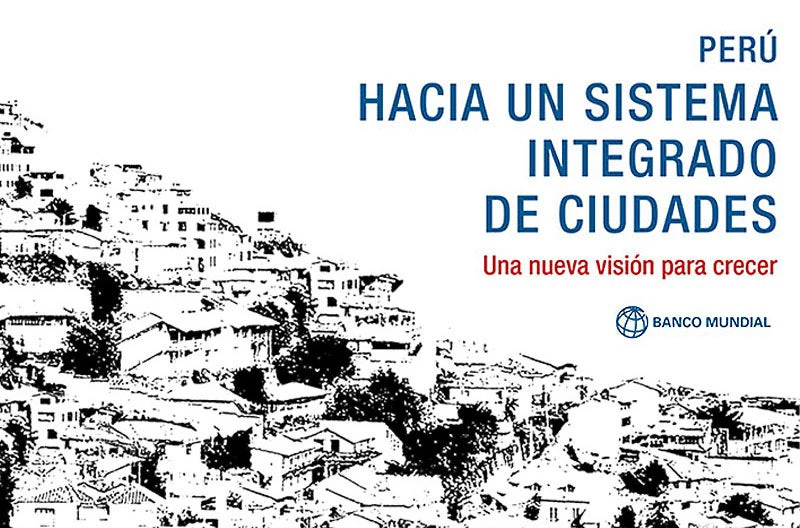
When you think of Peru, the first city that usually comes to mind is Lima. Why? Well, because Lima is the largest city in the country, with close to 50% of the nation’s urban population living in the metropolitan area; the city also produces 45% of Peru’s GDP. While this level of concentration of population and economic activity may not be a good or bad thing, it points to some imbalances in the urban system in Peru.
How do we know that cities outside of Lima are falling behind in terms of harnessing the benefits of urbanization?
When compared to Lima, most intermediate cities in Peru don’t match up in terms of economic growth, infrastructure and public service provision. The gap between GDP per capita in Lima and the rest of the country is around 40%. This gap is 20 points higher than the average difference between the largest city and the rest of the economy in the OECD countries. The quality of public services and urban infrastructure (such as water and sanitation, urban transport, health, education) is low, especially in peripheral areas. And as I have mentioned in a previous blog, only 1 in 5 districts in the country has existing urban planning instruments and 8 districts in the 530 urban districts have a complete and updated cadaster. Thus, property tax collection in Peru is one of the lowest in Latin America.
Why do cities matter?
With over 23 million people living in urban areas, cities will have a central role to play in Peru’s productivity and economic growth. The potential of cities as instruments for enhancing growth and reducing poverty lies in their ability to enable firms to benefit from being near one another. Cities are also able to leverage export markets by exploiting localization and agglomeration economies. Cities provide firms with large pools of labor and markets for their products, and provide workers with increased opportunities for jobs. Higher population densities also make it easier for city governments to provide better basic services to more people. For example, the cost of providing piped water in dense urban areas is estimated to be between 2.5 soles (US$0.70) and 2.7 soles (US$0.80) per cubic meter compared to 6.6 soles (US$2.00) in sparsely populated areas (Kariuki and Schwartz, 2005).
What can Peru’s cities do to become more productive and livable?
To unlock the potential of Peru’s cities, policies should focus on the following 4 key steps:
- Improve the flexibility of land use planning regulations and instruments and tailor policies to the needs of different city sizes. One of the challenges facing the national government is the fact that the responsibility for the implementation of two core elements of Peru’s sustainable urban development strategy (i.e. cadasters and urban planning) is spread across more than 500 urban municipalities ranging in size, capacities, and needs. A “fit for purpose” sequential approach to cadaster formation and management could be adopted to address the needs of various municipalities. Given the growing importance of intermediate cities, these municipalities could be targeted for capacity building and technical assistance efforts by the national government.
- Establish transparent and harmonized land information systems. For intermediate cities to be able to plan effectively for growth, to assess land uses, and establish a tax base, a common information system is urgently needed. Peru already has a large amount of information on land governance. If properly used (updated, disaggregated, synchronized, and shared within the government, the private sector and citizens) the large amounts of data that institutions have collected could become a powerful knowledge base. This information would empower citizens, help reduce social conflicts, and bolster the economic potential of the country. Recent efforts in Arusha, Tanzania suggest that investing integrated tools for city planning, cadastral updating, and revenue collection can pay off.
- Boost infrastructure investment in intermediate cities. Investment in infrastructure and public services serves two functions: a) it supports increased productivity and liveability; and b) it provides a signal to firms/households about different changes in use or function of areas of the city and gives credibility to those changes. When governments invest in places, people and firms respond. In the case of Peru’s intermediate cities, harnessing land value capture, land banking, and other innovative approaches to infrastructure investment could leverage investment and influence the longer-term development of the city structure ex ante. Investing in infrastructure ex post is the status quo approach and is often costlier. In Medellin, Colombia, the city is piloting a program to develop Tax Increment Financing (TIF) to develop a mixed-use urban regeneration project in the city’s downtown. Similar instruments could be considered as part of Peruvian cities’ revenue toolkits.
- Enhance coordination across government levels, sectors, and political cycles to maximize the impact of local investments (e.g., infrastructure, housing, etc.). Investment decisions have been decentralized to local governments per the Ley Organica de Municipalidades and the decentralization framework in Peru. However, the national government has an important role to play in supporting and accompanying cities in their growth and development. Coordinated efforts for larger scale infrastructure investment are needed. For example, shared solid waste disposal facilities can result in major cost savings due to the economies of scale of the service; coordinated efforts on affordable housing could also maximize the value added of subsidies from national government to support local planning efforts. Likewise, a long-term development vision requires consistency in planning and investment strategies despite changes in local governments.
These issues are reviewed more in depth in the policy note "Peru: Towards an integrated system of cities, a new vision for growth,” that the World Bank recently published. This book seeks to open the discussion about a vision for urban growth and development strategies. The book is available on our website at http://bit.ly/2pUvBVq
------------------------------
Originally published in Spanish on 06/11/2017 in “ Termómetro para el desarrollo” a Blog of Diario Gestión.



Join the Conversation